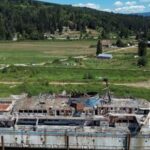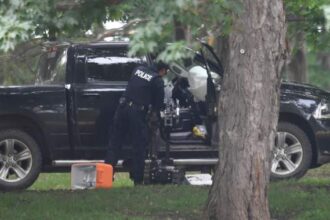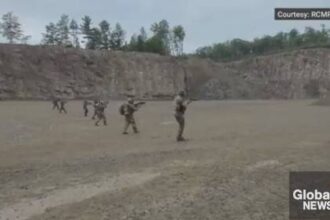A rapidly spreading wildfire near Hixon, British Columbia has forced emergency officials to issue evacuation orders for five properties, with five additional properties placed on high alert as firefighting crews battle the blaze under challenging conditions.
The Regional District of Fraser-Fort George announced the evacuation measures late Thursday as the wildfire, located approximately 60 kilometers south of Prince George, intensified due to recent hot, dry weather patterns that have elevated fire risks throughout the province.
“We’re seeing concerning fire behavior with this particular blaze,” said Regional District emergency operations coordinator Anita Horwath. “The combination of high temperatures, low humidity, and shifting winds has created a volatile situation requiring immediate precautionary measures.”
The evacuation order affects five properties along Bellos Road, while the alert extends to five additional properties in the surrounding area. Residents under evacuation order have been instructed to register at the emergency support services center established at the Hixon Community Hall.
BC Wildfire Service officials report the fire is currently estimated at 25 hectares in size but growing under the influence of strong afternoon winds. Three initial attack crews, supported by air tankers and helicopters, are working to establish containment lines before forecasted high temperatures arrive this weekend.
“This fire is demonstrating moderate to high-intensity burning behavior,” explained BC Wildfire Service information officer Taylor Johnson. “Ground crews are focusing on protecting structures while aircraft are attempting to slow the fire’s advance through strategic water and retardant drops.”
The wildfire near Hixon represents one of 178 active wildfires currently burning across British Columbia, according to provincial wildfire dashboards. The province has already experienced a more active early summer fire season than normal, with lightning strikes and human-caused ignitions contributing to the elevated fire activity.
Provincial officials have implemented campfire bans across much of southern and central BC as part of broader fire prevention efforts. Resources from other provinces and the federal government remain on standby should conditions worsen in the coming weeks.
Local resident Martin Crowley, who lives near the alert zone, described the situation as tense but orderly. “The smoke was visible yesterday afternoon, and by evening, we could see the orange glow on the hillside. Emergency responders have been providing regular updates, which helps keep panic at bay, but everyone’s preparing just in case.”
Climate scientists have noted that British Columbia’s wildfire seasons have grown increasingly severe in recent years, consistent with climate change projections that forecast hotter, drier summer conditions throughout western Canada.
For residents of Hixon and surrounding communities, this early-season wildfire raises important questions about preparedness as the province faces what could become another challenging summer. Will this early start to the fire season prompt additional provincial resources for rural communities, or is this becoming the new normal for British Columbia’s increasingly vulnerable forest ecosystems?











